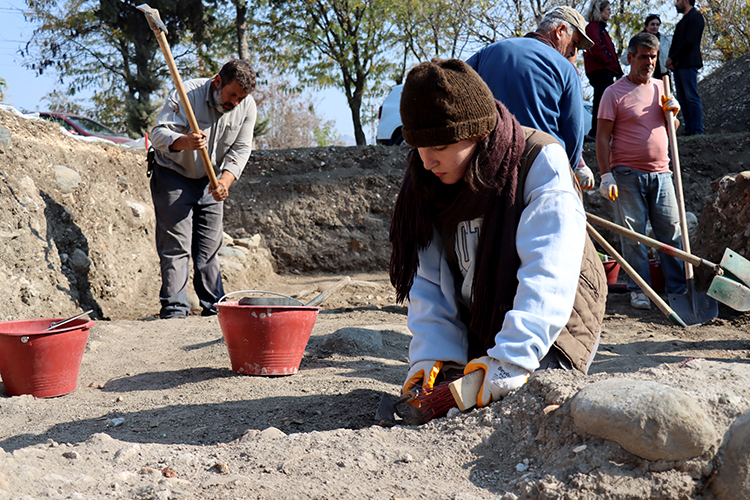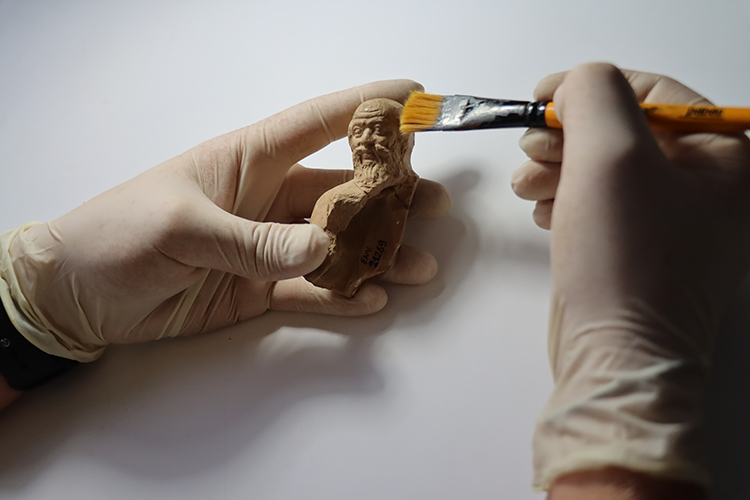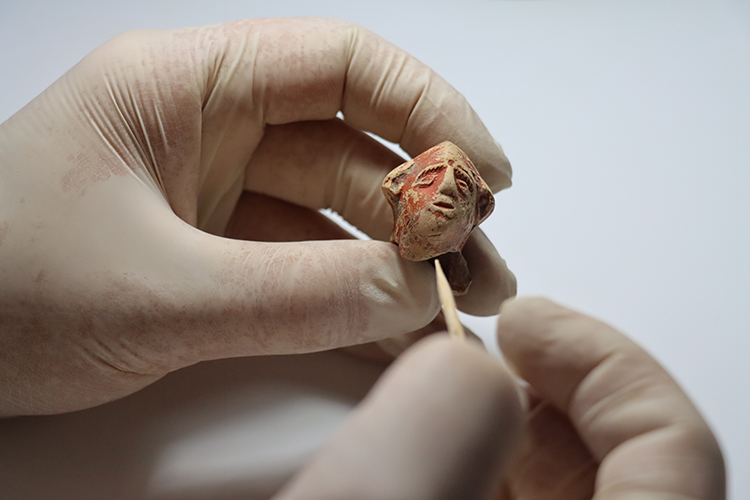
Two fragments of figurines that are 2300 years old were found during the excavations at the Antakya Ancient Hippodrome
Archaeological excavations conducted around the Antakya Ancient Hippodrome, which is believed to have been built during the Seleucid period in the 1st century BC, uncovered two fragments of figurines.
The excavations, led by Prof. Dr. Hatice Pamir from the Department of Archaeology at Hatay Mustafa Kemal University and conducted by a team of 20, aim to reveal the urban fabric of ancient Antioch.


📣 Our WhatsApp channel is now LIVE! Stay up-to-date with the latest news and updates, just click here to follow us on WhatsApp and never miss a thing!!
Excavation leader Pamir stated, “One of the artifacts is a fragment depicting figures known as ‘sophists’ in antiquity, who were intellectuals and traveling educators that transmitted knowledge. We know that ancient Antioch was always prominent for its intellectual institutions. The discovery of an artifact from the Hellenistic Period is extremely important as it indicates that intellectual education was taking place during that time.”

Pamir noted that the artifact was produced not by a mold but through freehand techniques by an artist. Regarding the other figurine, she mentioned, “We assess that the head of the figurine, which we believe dates to the late 2nd century BC, could be part of an object used in a household or a children’s toy.”
The fragments of the figurine have been preserved at the Hatay Archaeology Museum.
You may also like
- A 1700-year-old statue of Pan unearthed during the excavations at Polyeuktos in İstanbul
- The granary was found in the ancient city of Sebaste, founded by the first Roman emperor Augustus
- Donalar Kale Kapı Rock Tomb or Donalar Rock Tomb
- Theater emerges as works continue in ancient city of Perinthos
- Urartian King Argishti’s bronze shield revealed the name of an unknown country
- The religious center of Lycia, the ancient city of Letoon
- Who were the Luwians?
- A new study brings a fresh perspective on the Anatolian origin of the Indo-European languages
- Perhaps the oldest thermal treatment center in the world, which has been in continuous use for 2000 years -Basilica Therma Roman Bath or King’s Daughter-
- The largest synagogue of the ancient world, located in the ancient city of Sardis, is being restored











Leave a Reply